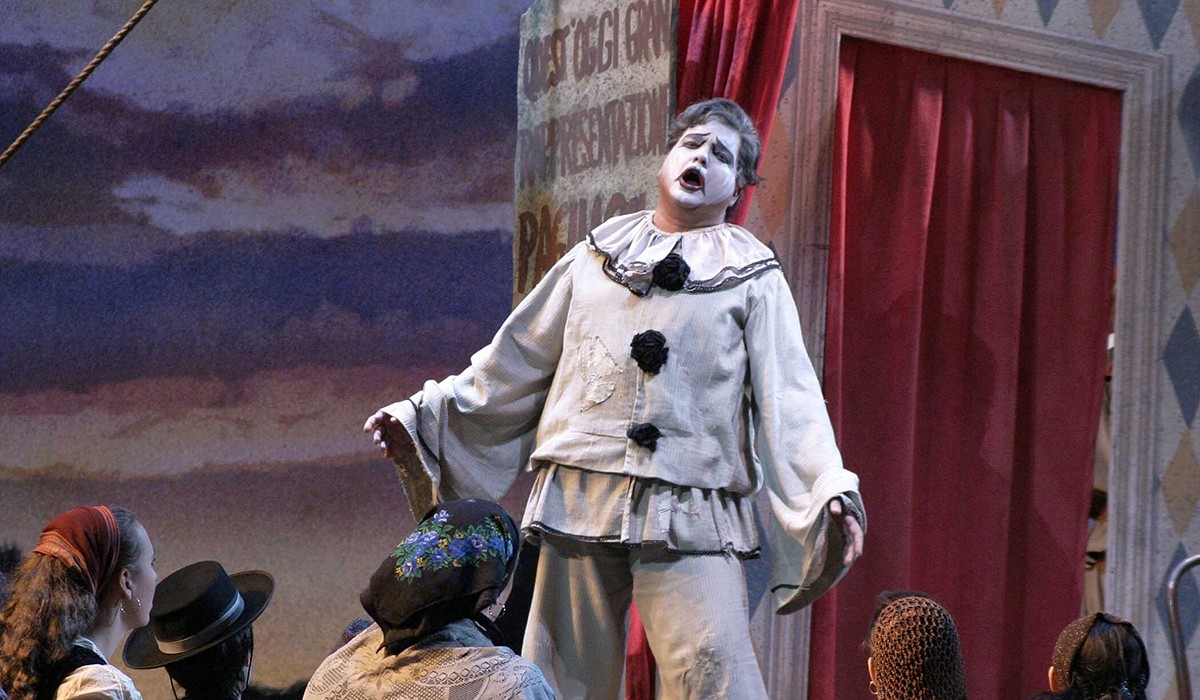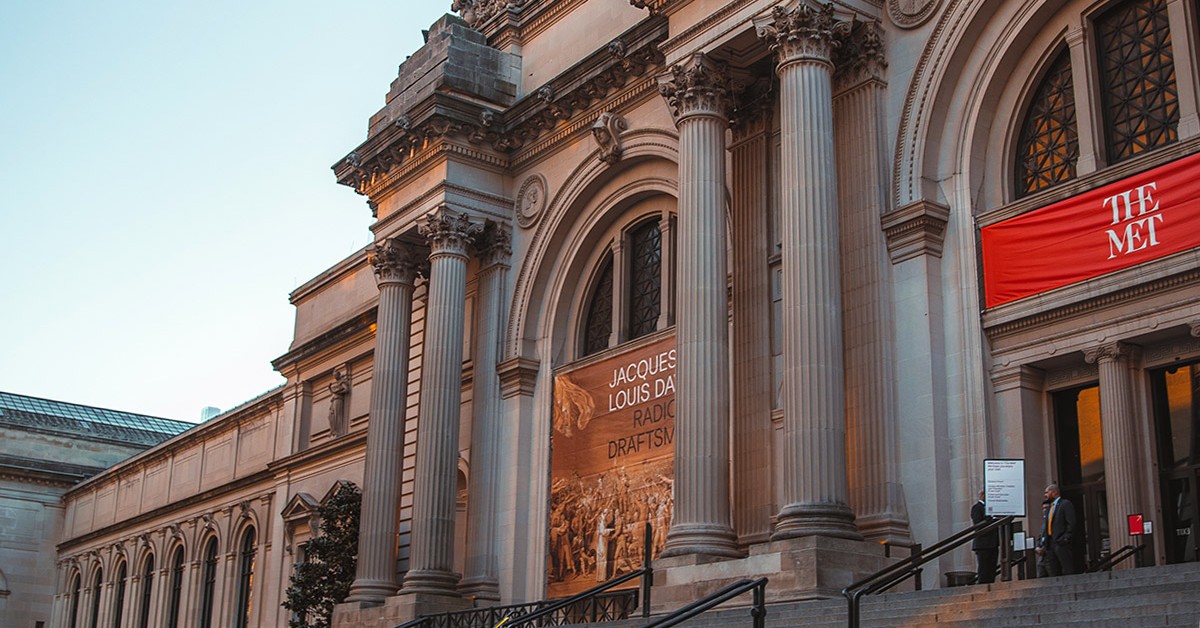
Musings on the Viewing Experience
When looking at visual art (admittedly a very broad category), there are many viewing experiences. You may be in the audience of a performance, in an immersive experience of one kind or another, seeing painting or sculpture in the environment of a gallery or outdoors, it may be crowded or you may be alone. What is common to any of these is that you are present and interacting with the work and that the environment influences the experience.
It is rare, these days, to see works of art that are well known and widely reproduced in an empty gallery. The museums that hold them are usually busy and crowded. To make the experience thoughtful requires some effort and that all depends on what you want to take away. Personally, I always read labels. After all, someone with years of study took the time to write them. Even if I do not agree with what was written or wish for different information (more biographical, more technical, more context), knowledge is gained.
Recently, I had the pleasure of seeing the high-profile Manet/Degas exhibit at the Metropolitan Museum of Art. It was a much anticipated visit, an opportunity to see several paintings I had never seen in person, a comparative curatorial perspective of two artists with whom I was very familiar.
Below - Included in the exhibit is the well known Woman with a Parrot. Although it is always on display at the MET, this gave it a new context.

A little background - as an undergraduate student more intrigued by works on paper than in painting (a blasphemous attitude in those days) and a graduate student working with the figurative work that had much to do with the way women were perceived visually, of course I was drawn to this period with it’s disruption of well, pretty much everything. Post revolutionary politics, new technology, one “ism” after another in art, bringing active exploration of ideas and much experimentation. Of course, art history does not stop there and neither did I, but one of the things that has always stuck with me is a distaste for the general perception of Impressionism as pretty, soft pictures. In all the years of museum and gallery visits, a moment of epiphany was looking at Monet’s Haystacks in the Art Institute of Chicago and suddenly understanding why these works were perceived as ugly when they were first exhibited. Finally I was able to see this movement for the scientific experiment it was.
All of which brings me to this exhibit. This is not a review (you can find many of those). Keep in mind, that any review of a blockbuster or retrospective exhibit is not a review of the art- it’s value has already been determined. It is an evaluation of the curator. What this is about is the experience of looking at art in real life. The museum chose not to sell timed tickets or charge extra, but instead, they very efficiently asked visitors to scan a QR code and join a queue, then sent a text to tell you when to get in line. Knowing all this, I got there when the museum opened and was one of the first in line. It was already very crowded.
Below - Degas also highlighted that vibrant color with The Singer in Green.
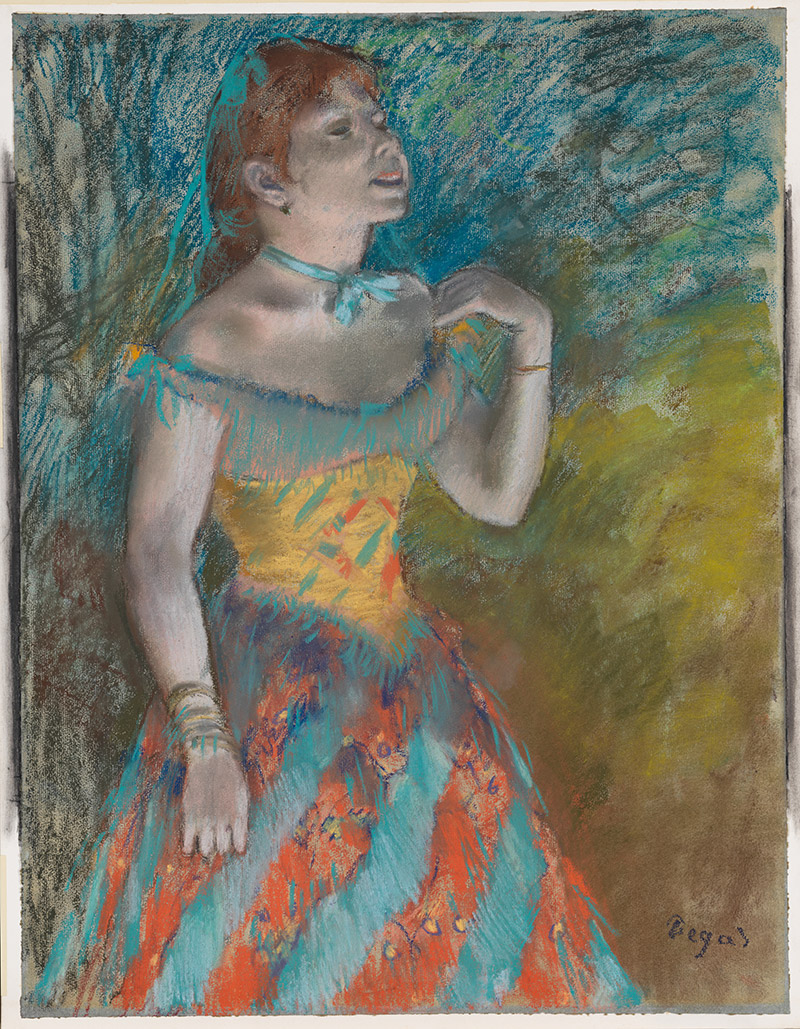
Working my way through the gallery required patience. The pace was slow, not by choice, but because it was slow I found myself reading each label carefully and when I finally got in front of a major work, I spent time. I had earned it. A rhythm of reading and viewing carried me through. Reading the labels, revealed information, some new, mostly not. It was not so much the information, but the construction of a friendship, the differences and commonalities between the two artists that was revealed.
One of the things that the curatorial narrative made clear was that both men examined carefully the work that came before them, used it in their exploration of ideas and thus moved the field forward. That the move toward abstraction was an evolution rather than a rejection of previous forms. It also placed the work into the context, influence and inspiration of their family, social and intellectual circles, professional pressures and the politics of the day. Could this narrative be created outside the context of the exhibit? Of course it could (and has been), through other printed or on-screen media. What is missing in those experiences is the actual three-dimensional work. The texture of drawing on the textured paper, the brushstrokes on the canvas are always flattened by their translation into dots or pixels, not to mention the loss of color in the transition to CMYK or RGB always loses immediacy.
Below - A study of Manet by Degas, who portrayed his friend in multiple works.
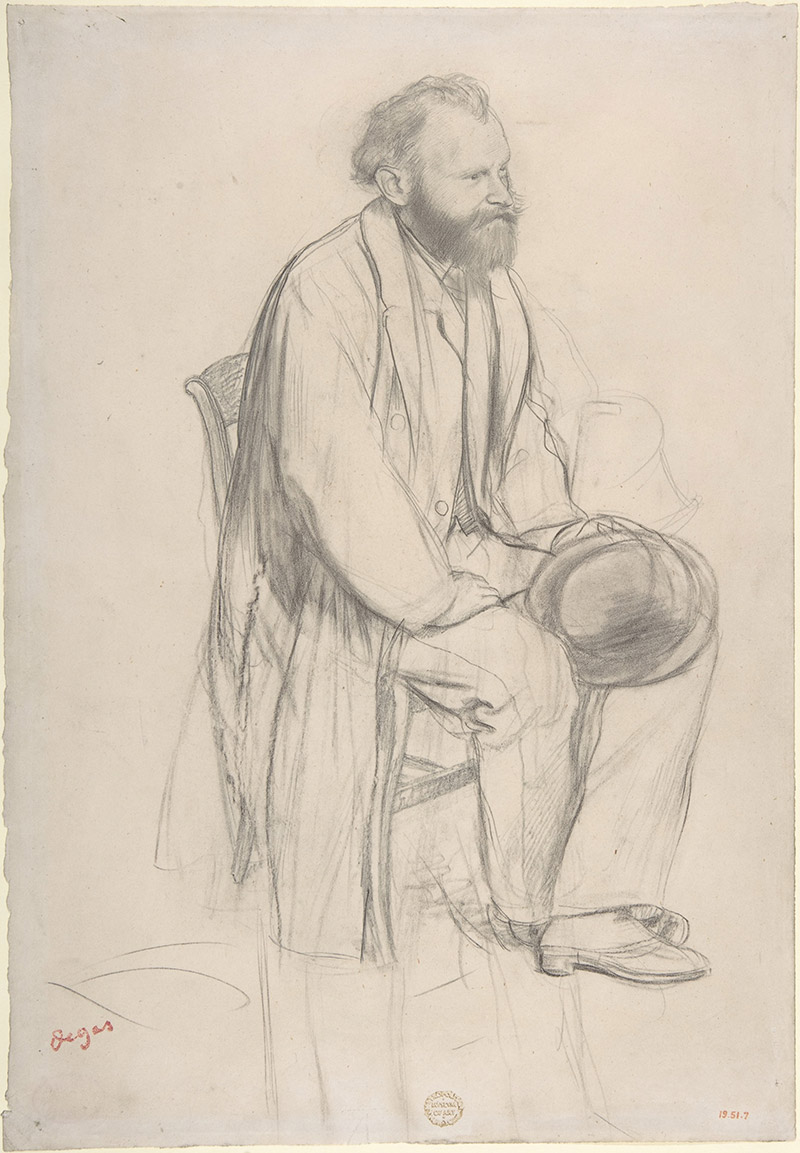
Then there is the scale. There are sketches and studies, many on a wall, that draw you close in order to be seen. These are the works you might go by more quickly in an empty gallery. I usually do not because it is the stroke of drawing, the space left empty and the experimentation of materials that intrigues me. In this particular exhibit, they revealed the ways in which the artists studied artists that came before them, influenced by the Spanish - Goya and Velasquez in particular. The attention to the prints was a nice touch, showing the actual plates and the prints in various stages of completion and the artist printed, then worked further on them.
The larger more famous works - Olympia, The Bellelli Family felt large, even though they are smaller than lifesize. They are also much more textural and warm. A quick mental reminder that usually they are seen in the pages of a book or on a computer screen facilitates an adjustment. You can then appreciate the close up abstraction created by the brushstroke within the context of a highly finished painting. The act of drawing back and observing the relationships between the various people and objects pulls the viewer into the moment- the Impression, if you will.
There were two things that jolted, both by Manet and both unexpected. The first was the raw gestural quality of the large study of Luncheon on the Grass (the final work was not in this exhibit) gave me a jolt and caused me to reexamine the composition and perspective. With any luck, I will carry the feeling and never be complacent in looking at the piece again. The second was the very bright viridian green that appeared in many works. I am sure I have seen it before in other work, but here it jumped out at me. It was not mentioned in the labels. New technology was not the point of this exhibit, so that was not a failing on the part of the curators, but still an important part of my reactions. I had to go look up the chemistry later.
Is any of this new information? It is not, being certainly the topic of reading and discussion forever. What is new is the physical interaction between the viewer and the object. Just as you can look at pictures of the ocean, see and hear it on film and read descriptions, the only way to truly understand wet, salty waves is to experience them. Some viewers know more about what they are looking at, some less. That does not make their viewing experience any less valid, but understanding art is to understand what you are looking at. The works of Degas are all over the place in popular culture and I am sure there are many who left this exhibit still wondering where all the dancers were, some probably annoyed by that.
I knew a lot about what I was looking at, so for me the engagement came in understanding the relationship between the two artist and how their interaction influenced their work as well as the aforementioned seeing it face to face.
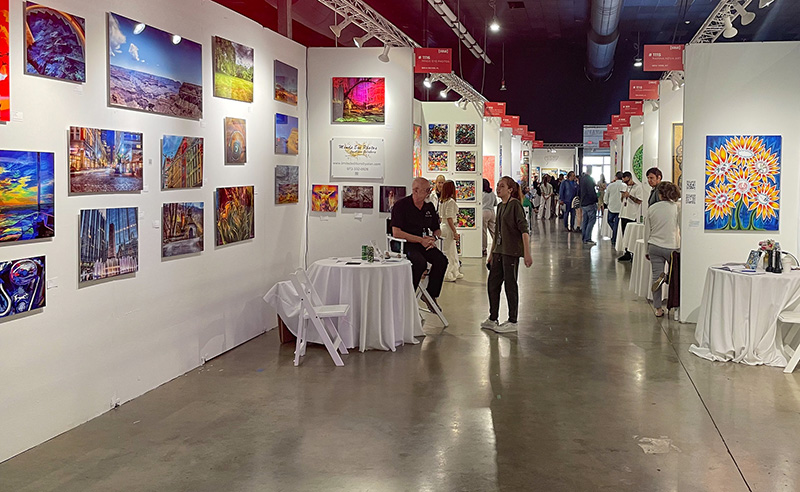
Looking at work in an art fair or commercial gallery is a totally different experience. There may be labels that just list the title and medium, maybe an artist biography. Then there is your personal context. What brought you there? Maybe you know the artist, or came with a group or you were just curious. Whatever the reason for going, the the potential for adventure is there. Someone has decided that this art is good enough or sellable enough to be there. While some of the art may be historically important, there is also a lot that is new, contemporary, not sorted into a category.
Especially with a fair, where there is booth after booth, so much to see, so much variety, it may be overwhelming. You may find yourself skipping over what does not appeal to you or just skimming. There may not be labels to guide you and you may or may not find a common thread in the work. BUT- there is a unique opportunity here. No booth is ever left unattended. There is always an artist or gallery owner and they nearly always want to talk about the work. What is the artists underlying idea or unique technology? Why did the galleries choose this work to bring to this show?
That means you get to hone your opinions and learn more to inform them. What do you love or hate, what evokes a feeling, what you feel is a waste of time. Those opinions and feelings may change over time, informed by more knowledge, more experience or they may not. What is for sure is that your experience is yours to keep and you can only have it by going and looking.
Similar Posts
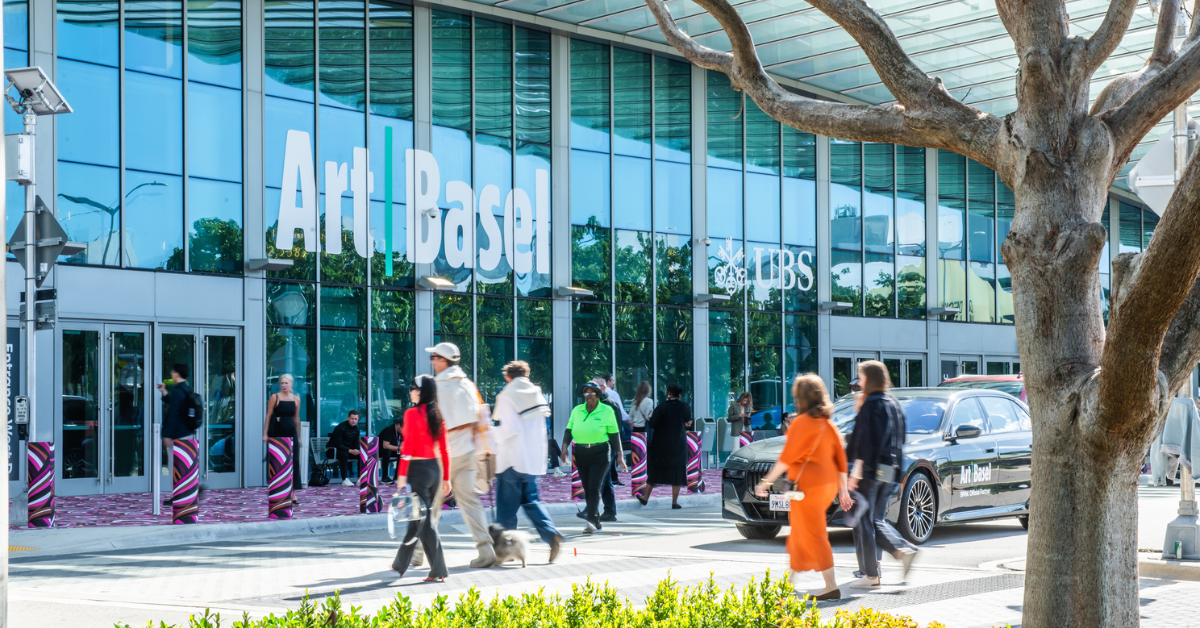
The most wonderful time of the year? Art Basel Miami Beach!
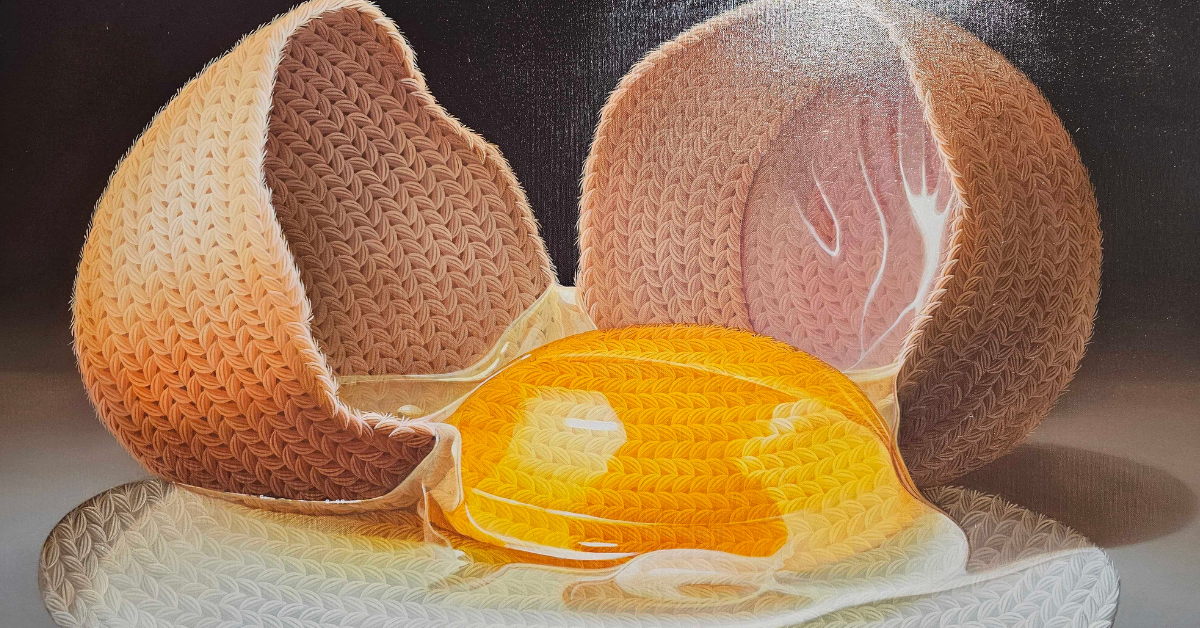
How Do You Want to Look at Art?
Recent Posts
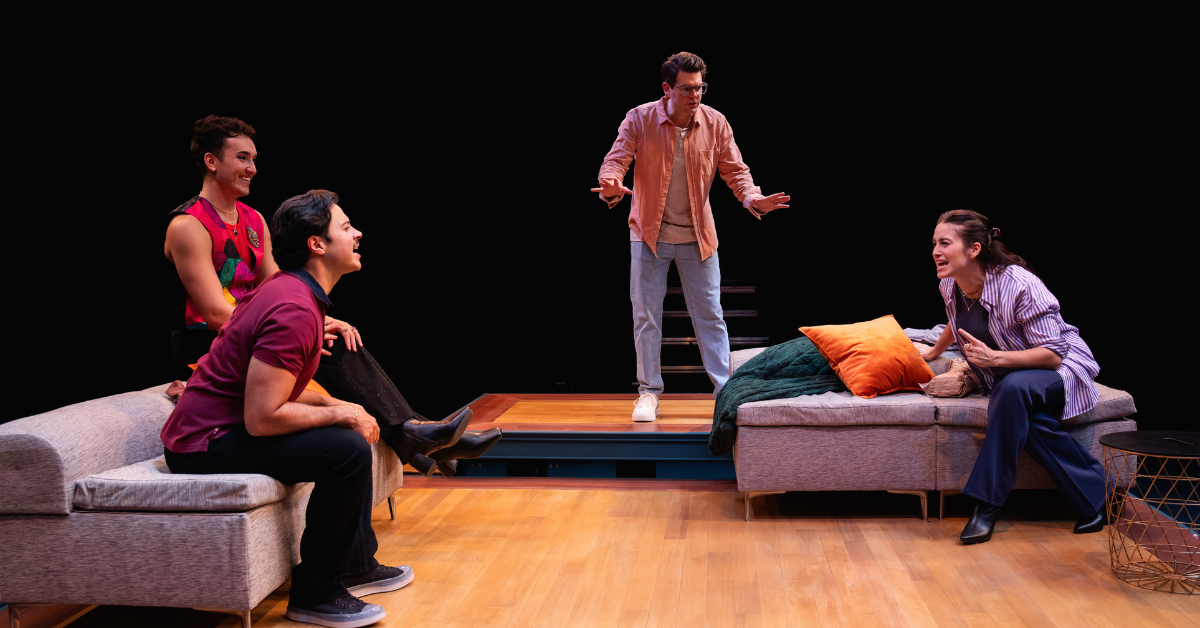
A Third Way Review
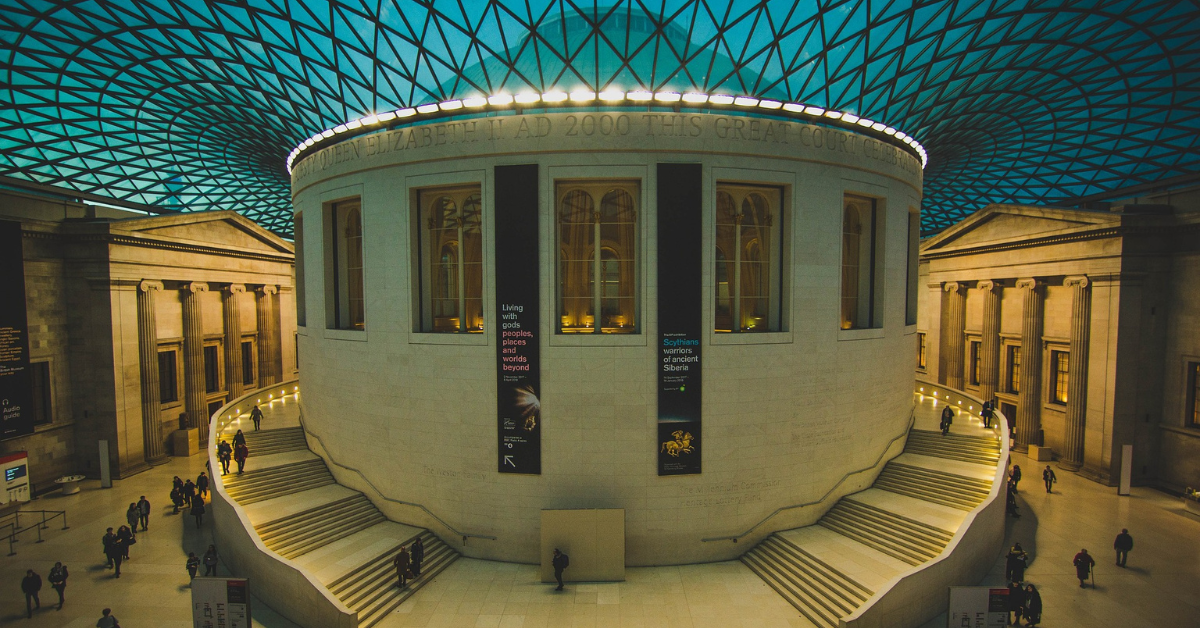
The World's Most Famous Art Galleries and Museums You Absolutely Need to Visit

Maker Once Known
